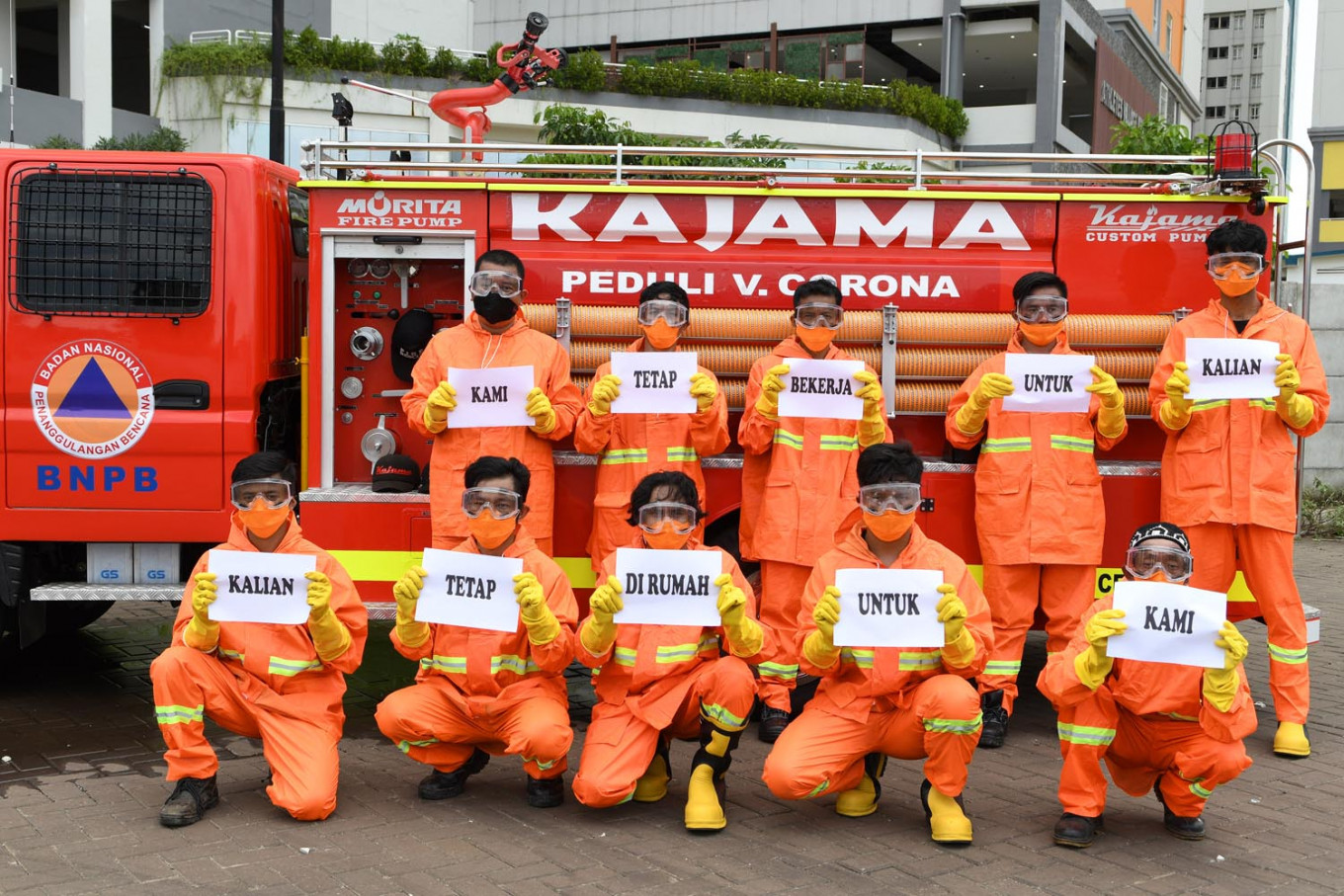Popular Reads
Top Results
Can't find what you're looking for?
View all search resultsPopular Reads
Top Results
Can't find what you're looking for?
View all search results[INSIGHT] Disaster amid pandemic: Operationalizing remote support
Are we ready for national or nonnatural disasters while the world is struggling with COVID-19? Now is the time to plan and prepare.
Change text size
Gift Premium Articles
to Anyone
W
e have read numerous articles and listened to countless webinars on humanitarian operations amid the COVID-19 pandemic. Humanitarian workers continue to contemplate how coordination will work should a natural disaster strike during the pandemic, given the restrictions within and across countries.
Prior to COVID-19, international aid workers would fly out to the affected country to meet with relevant stakeholders to discuss and plan how best to proceed during the emergency. We are used to being physically present and meeting with our counterparts to solve complex problems. With the pandemic still raging, is that still feasible?
COVID-19 seems to have forced us to find new ways of coordinating without risking our lives. Hence, the conversation is about how to coordinate in the new era of remote support for emergency response operations. As easy as it may sound, do we really know how humanitarian aid coordination will operate during this pandemic?
Essentially, coordination as a process is the entire effort of achieving common goals, from engaging with humanitarian actors, building trust, exchanging information and planning strategies to delivering the final result. To achieve this, it is essential to meet and discuss with various stakeholders on a regular basis, particularly since information is dynamic and limited in times of emergency. For instance, during the Central Sulawesi earthquake and tsunami back in 2018, humanitarians, including the Indonesian government, were busy attending various cluster meetings almost every day.
As a structure, coordination aims to illustrate complex elements and show how they synergize. Before COVID-19, most countries had a coordination structure in place to determine who calls the shots and how decisions are implemented. However, the game plan has changed with the pandemic. Countries have set up ad hoc coordination structures specifically designed to tackle COVID-19.
How would this new ad hoc structure work with existing national/local coordination structures for natural disaster response?
In Indonesia, for example, the National Disaster Mitigation Agency (BNPB) leads the national task force for COVID-19, which brings together around 49 government institutions. Meanwhile, the BNPB also sits at the national level to coordinate emergency response in a non-pandemic setting.
In Malaysia, the coordinating agency in a non-pandemic situation is the National Disaster Management Agency (NADMA). Yet, in light of the current situation, the Ministry of Health is taking the lead since the disaster is a pandemic, while the NADMA plays as the orchestrator by coordinating with relevant institutions in complying with advice and steps taken by the ministry.
Looking at those examples, do we all fully understand how these structures will work together when a catastrophe occurs amid a pandemic? Will the ad hoc task force be in charge, or will the coordination structure for natural disasters be the main player?
At the local level, it would also be interesting to see the dynamics, particularly how national authorities can support local efforts, considering travel restrictions and also the local ad hoc task force that may be in place.
Now let’s talk about the physical place, or a space to bring together all actors to cooperate and collaborate with each other. In the past, this space could be tents or office spaces near affected sites. Due to the pandemic, such a space cannot exist. This is the time for us to talk about how we can transform our face-to-face meetings to virtual ones to support humanitarian coordination.
We should ensure if we have sufficient infrastructure and that all the stakeholders are familiar and confident with these platforms.
If the purpose of coordination is to ease communication and exchange information, so as to deliver relief assistance to the affected people, it is best to do it in advance, before our hands get tied up with the emergency response. Yes, investment in preparedness efforts becomes more apparent, and must be done in a targeted manner particularly during this pandemic situation.
If we are used to cluster meetings during a disaster, perhaps we can do it now and discuss what will be the plan if a disaster occurs. This is the time for us to map out available resources in the country, their capabilities and how best to collaborate. If there are no apparent structures, we can improve the situation by capacitating in-country resources, including their ability to make maximum use of virtual platforms.
While there is still time, it is best that we use this time to set-up the infrastructure, systems and platforms, and even conduct training, to facilitate a productive and targeted online meeting. By doing so, we may be able to help curb the infection rate, empower local leadership and ensure a more efficient and targeted response.
----------
Preparedness and response officer at the ASEAN Coordinating Centre for Humanitarian Assistance on Disaster Management (AHA Centre)










